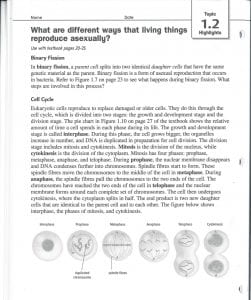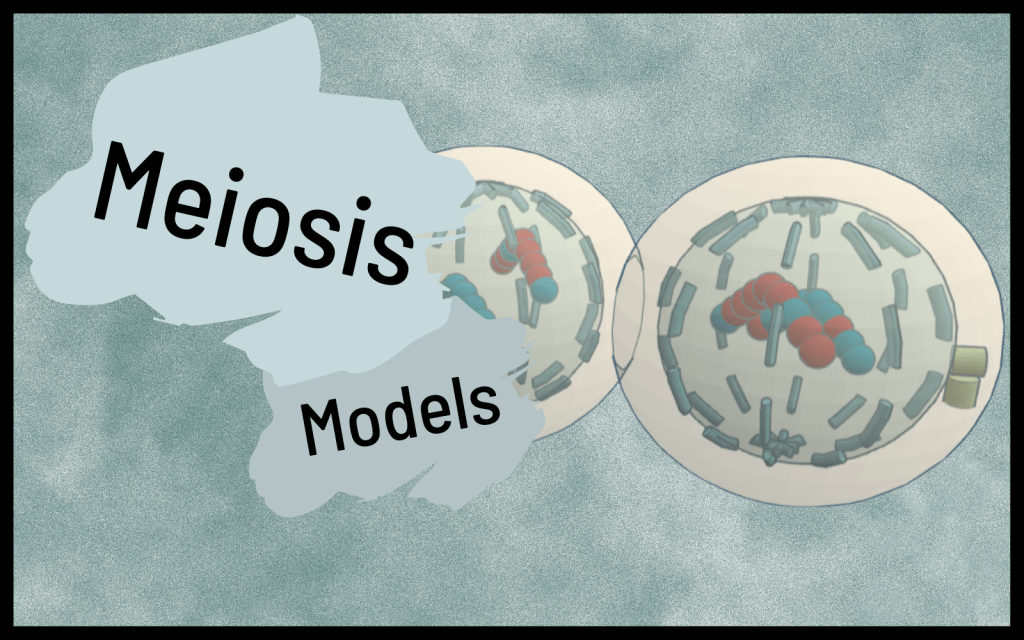Hello! Within this blog post I will be reflecting on a new scimatics project that I finished called Meiosis Models. In this project we learnt about the process of both mitosis and meiosis and were tasked with showing these processes throughout accurate 3D models. The driving question for this project is “How is other reproduction of cells essential to the survival of organisms?”. I built enough information to answer this driving question by working on different milestones (that will be mentioned throughout this blog post). Within this project I strove to learn the cell theory, which is a foundation to different biology studies. I also think that I was able to analyze and understand the curricular curricular competencies in this project.
The first milestone I completed was “Project Start Mind Map”. To complete this milestone we watched a video of reproduction and was giving a baseline to this project. We then all discussed our most important questions about this topic, which I think helped my curiosity of this project. Throughout my Mind Map I asked questions about different factors that I was wondering about, such as the content or process of this project. I feel I asked formative questions that made me curious about what will happen throughout the project and made them connect to different ideas. I then, at the end of the project I added facts that I learnt to answer so questions that I previously had.

I think this milestone showed my best use of the curricular competency “Questioning and predicting”. I used this competency throughout this milestone because I demonstrated a sustained curiously about a scientific topic. This was done by my interest in learning new concepts and basing some of this questioning off of previous scientific aspects I’ve already learnt. I could have improved my use of this curricular competency by using it throughout other milestones, where I sometimes was off task (but eventually was able to get back on track to have my best products be displayed).
Throughout this project, to build knowledge, I completed three workbooks. These workbooks were about obtaining information specific to the reproduction process. Workbook 1.2 and 1.3 were really important to my learning because I feel it taught me the basics of mitosis and meiosis. By learning these concepts I was able to accurately create my final video. So really this steppingstone was the foundation to my success.


To start off the direct process of creating the final narrative video, I started to refresh my memory about the software used to create the 3D models, TinkerCad. I completed some tutorials to refresh my memory of creating models (I use the term ‘refresh’ because last year I used TinkerCad in the project ‘Ultimate Design Challenge’). I think doing these tutorials really helped myself learn techniques to created detailed work. From doing these tutorials I was able to create my models and get feedback on them. I think I definitely benefited from doing this
Throughout this project we were trying to constantly learn more about mitosis and meiosis. So, to do that we took a Khan Academy test. I understood the basics of all the questions in the test, but I wanted to learn more so I used the information to learn more concepts of mitosis and meiosis. From going through the other tests I think I was able to have a detailed understanding of the concept I was learning, which really benefited my result on the unit test as well as my overall understanding of this topic.

We then moved onto another competent of the narrative video, the photos of mitosis. To start the project my desk partner, Gwen, and I planted cloves of garlic to go through a cloning process. We let them grow throughout the timeline of the project and we were able to use them in an experiment. The experiment we conducted was about taking microscopic photographs to identify the stages of mitosis throughout the cells of the garlic clove. To conduct this experiment we cut the roots of the garlic clove off and put them through a chemical procedure to easily see the cells within it. After the first attempt not working because we cut the wrong end of the root, we tried again and were able to get some photographic evidence of mitosis.
The microscope slides of plant tissues that were prepared for photographic evidence best showed my use of the curricular competency “Planning and Conducting”. I used this competency throughout this position of this project by collaboratively and individually investigating methods from a lab experience that to collect reliable data. I really did this by conducting the experiment to find the process of mitosis throughout a plant tissue. I think I could’ve improved on this curricular competency by having including some more qualities data to show our collective research.
Once all of the visual content for the final product was completed I was able to work on the combination of it all in the final product. To create the narrative video I recorded a voiceover to explain the process that I was showing. I also used different editing skills to enhance the information displayed, such as split screen. We were tasked, in the criteria, to explain the similarities and differences between mitosis and meiosis. I think I was able to do this with a detailed result because of all of the knowledge I’ve gained throughout this project.
The narrative video best showed my use of the curricular competency “Scientific Communication”. I used this competency to formulate visual models to describe a scientific phenomenon. I specifically did this by creating 3D models in a narrative video that explained the reasons of the process of both mitosis and meiosis. I could’ve improved on this competency by showing possible mental/theoretical models that enhance my detailed visual models I created. Overall, I completed this competency with sophisticated standards in mind.
To conclude, this project helped myself learn about the process of reproduction, specifically the contents of mitosis and meiosis. I think I demonstrated an insightful understanding of the contents I learnt throughout different aspects of this project. Now, from this knowledge I know have I’m going to answer the driving question: “How is other reproduction of cells essential to the survival of organisms?”. Well…other reproduction of cells are essential to the survival of organisms, not just one individual living thing. This is because the reproduction of cells is a process in which benefits the ongoing generations of species. Without reproduction of cells the organisms can’t thrive and instead they will die off, along with the species it belongs to. Overall, reproduction of cells is the essential to the live cycle of a species and really effects the world.
Thank you for reading this blog post. Now, have you learnt anything from this post?
Alicia 😀







